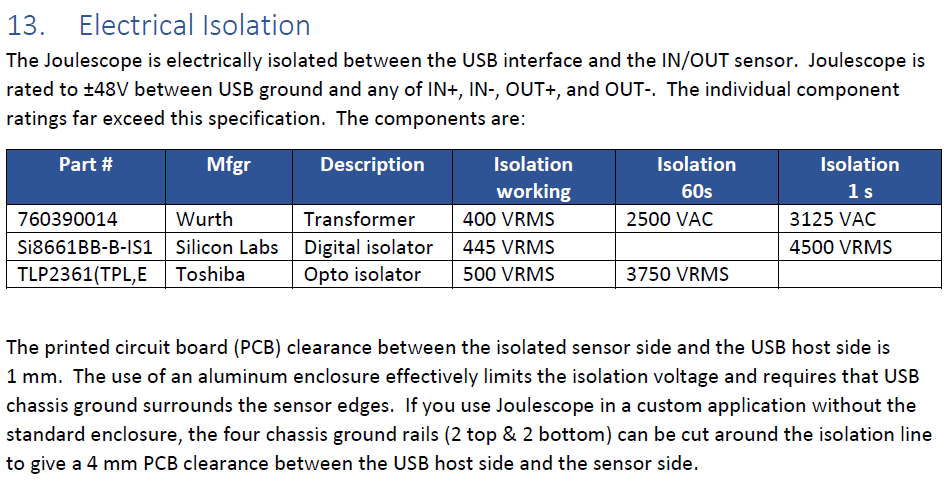Hey everyone,
Is it possible to use the joulescope for higher voltages i.e around 24V with a voltage divider circuit in the input? Are there any other options or circuits you recommend to monitor the current for voltages higher than 15V?
Hi @Kart and welcome to the forum! Yes, it is possible to use Joulescope to measure higher voltages using a resistive voltage divider with some caveats. Here is a simplified block diagram of your Joulescope:

The IN- and OUT- are actually tied together inside Joulescope (actually on the front panel). If you can tolerate drawing a little extra current from your source, you can use a resistive voltage divider. Connect the resistive voltage divider between your power source - and +. Size the resistors so that the voltage from power source + to the divided voltage node does not exceed -15V. Then connect the divided voltage node to IN-. Connect power source - to your device under test’s -. Here’s a diagram:
You still need to ensure that no IN or OUT signal is more than ±48V from USB GND. Although Joulescope’s sensor side is isolated from the USB side, Joulescopes are only certified for low-voltage use. Joulescope’s voltage and power will be off by the same factor as the voltage divider.
As an aside, although Joulescope only measures -1 to +15 V, it is specified to tolerate ±20V.
Does this work for you? If you cannot tolerate the extra current from the resistive voltage divider in your setup, there next best option is a battery-powered op-amp buffer followed by the resistive voltage divider.
Awesome, this will work. Thanks Matt.
Alternative Solution: If you only need to measure current and charge, you can use the Joulescope JS110 as an ammeter only. Connect IN+ to your power source and OUT+ to your device under test. Connect your device under test - to your power source - without going through Joulescope. You can optionally connect IN+ to IN- to keep voltage stable. Leave OUT- disconnected. Like this:
In this configuration, your Joulescope will measure current and charge. It will not measure voltage, power, or energy in this configuration. The Joulescope is electrically isolated between the USB interface and the IN/OUT sensor. Joulescope is rated to ±48V between USB ground and any of IN+, IN-, OUT+, and OUT-. Here are the details from the Joulescope JS110 User’s Guide:
Note: I revived this old topic since I got a direct question on making this measurement that referenced this post.


